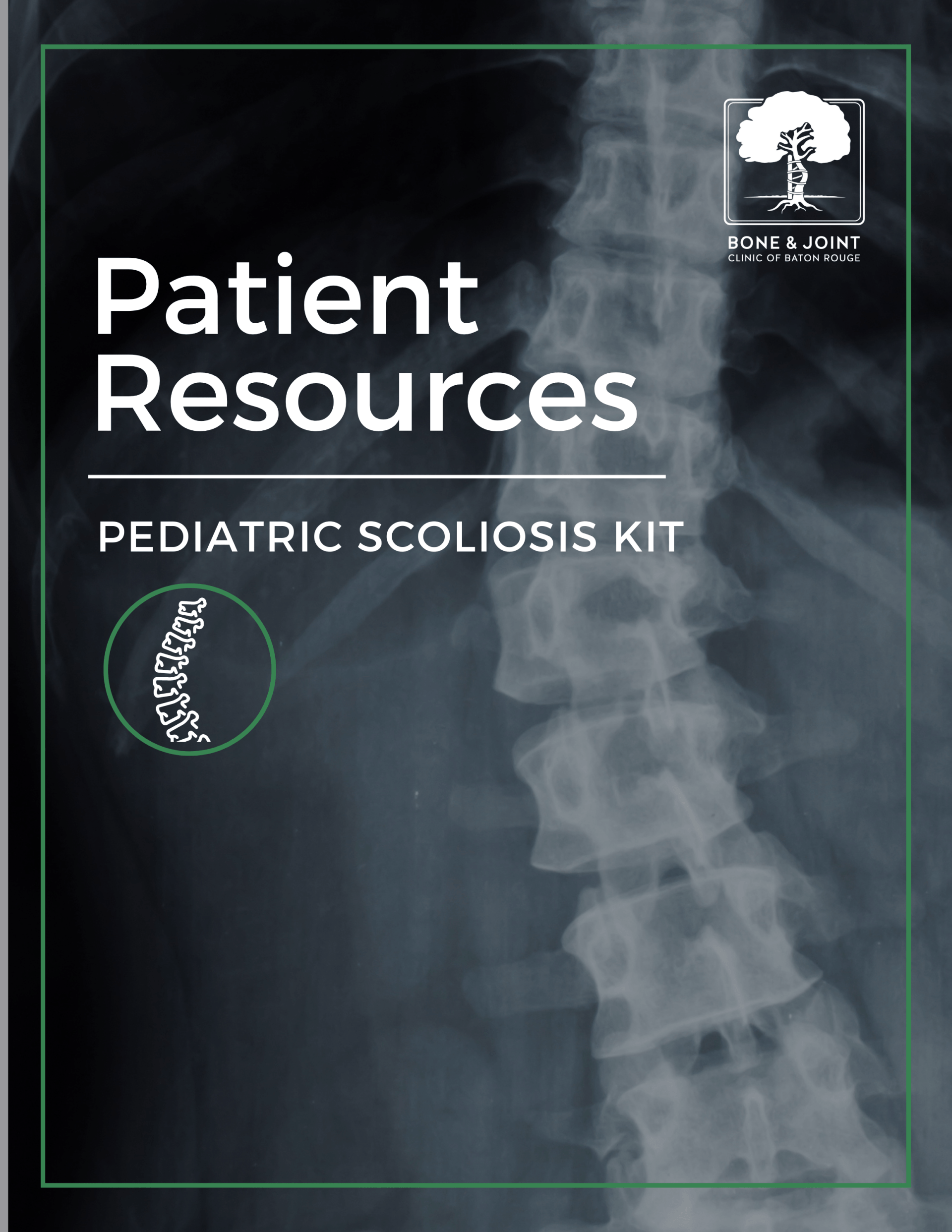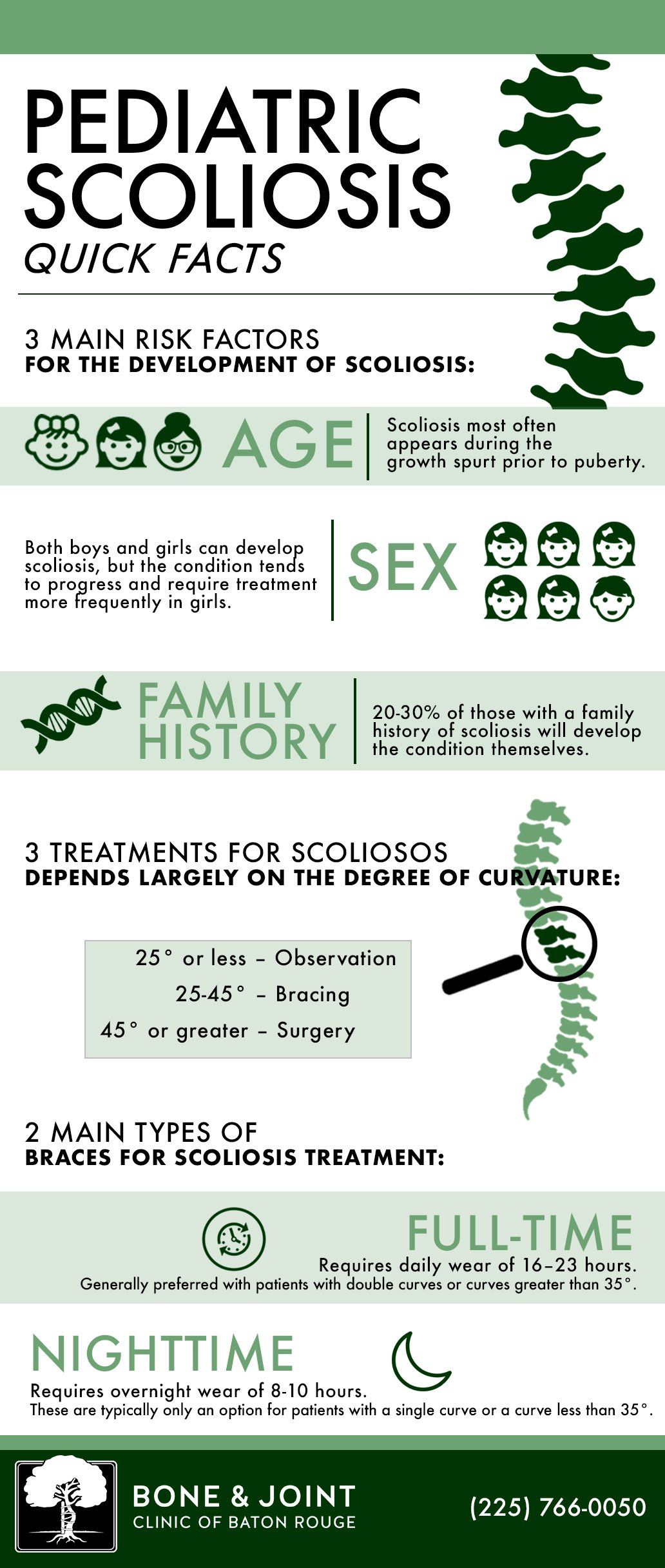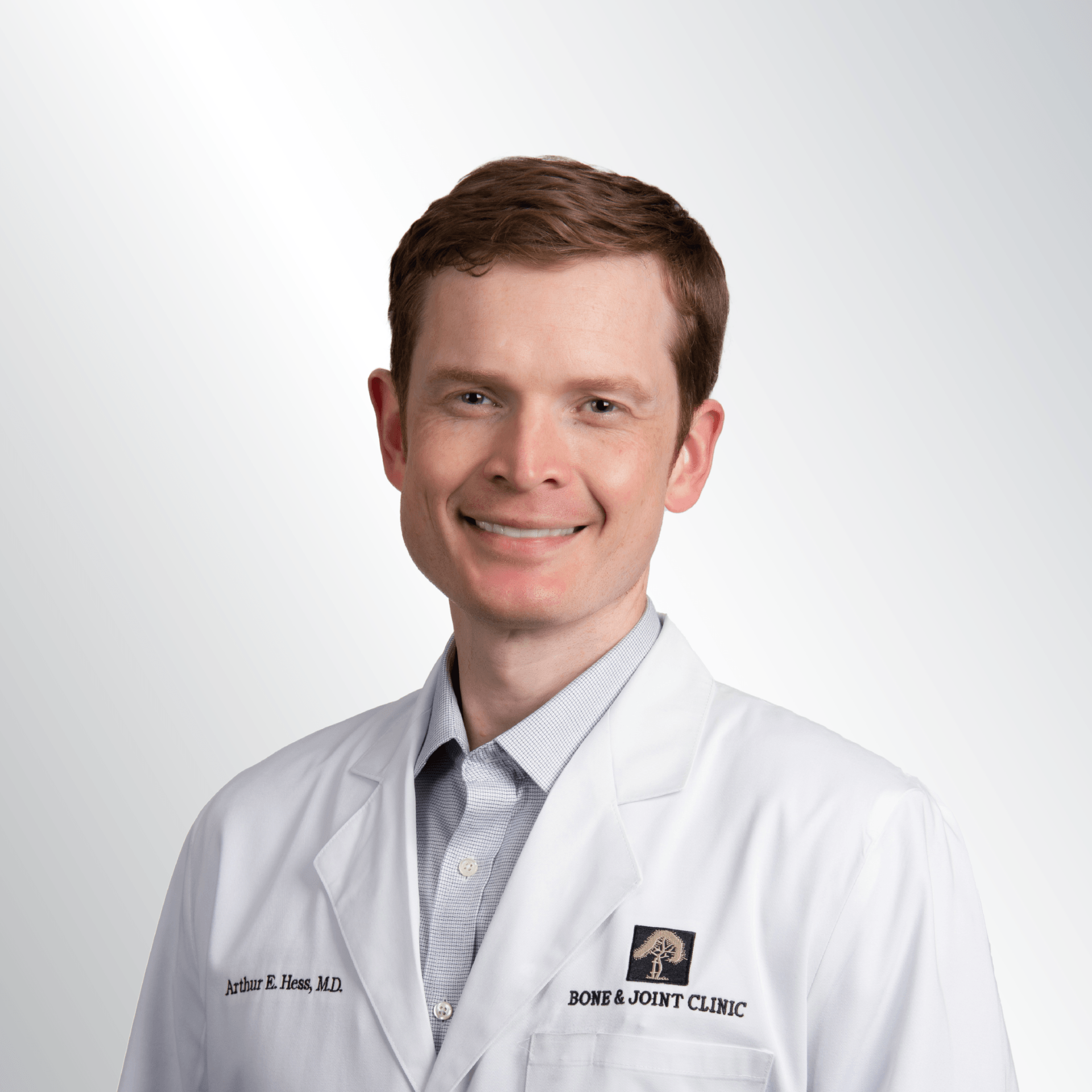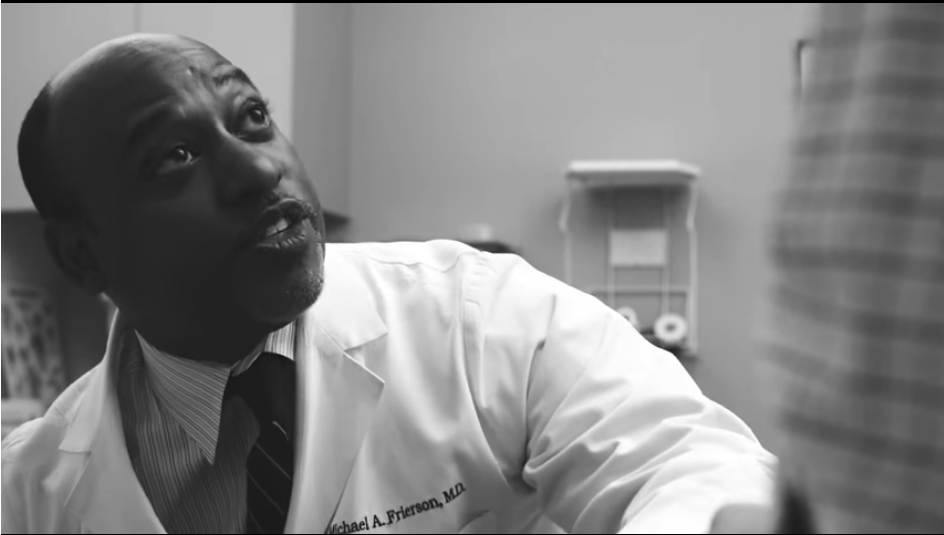Baton Rouge Pediatric Scoliosis Specialists
What is Scoliosis?
Scoliosis is a pediatric orthopedic condition hallmarked by a sideways curvature of the spine in the shape of an S or C. While it can occur in both adolescents and adults, it is most often seen in children aged 10 to 12 during the growth spurt that occurs just before puberty.
What are the Different Types of Pediatric Scoliosis?
Scoliosis affecting adolescents is categorized in one of three different ways depending on the underlying cause of the spine's curvature:
- Congenital Scoliosis - Congenital scoliosis is a deformity of the spine that is present from the time of birth. Potential causes include vertebrae that do not form normally, missing bones of the spine, partially formed bones, or bones that do not separate normally. This particular form of scoliosis is uncommon, occurring in only 1 out of every 10,000 births.
- Neuromuscular Scoliosis - Neuromuscular scoliosis is the second most common form of scoliosis. In this form, the presence of scoliosis can be directly attributed to a nervous or muscular system disorder such as cerebral palsy, muscular dystrophy, or spina bifida.
- Idiopathic Scoliosis - Idiopathic scoliosis is the most common form of pediatric scoliosis, accounting for as many as 80% of all cases. This particular form of scoliosis has no known underlying cause and most frequently appears between the ages of 10 and 12.
How We Treat Pediatric Scoliosis
There are three primary methodolgies for treating most cases of pediatric scoliosis. Which method is selected depends mostly on the severity of the condition:
- Observation and Repeated Examination - The majority of adolescent scoliosis cases are mild and do not progress to the point of treatment. In these instances, observation and repeated examination are used to monitor the progress of the spine's curvature. Most physicians will use this treatment approach when the spinal curve does not exceed 25 degrees and skeletal growth is not yet complete.
- Bracing - Braces are indicated for cases of scoliosis in which the curvature is between 25 and 45 degrees. Patients who have a single curve or whose curve is less than 35 degrees, a nighttime brace may be recommended to be worn for 8-10 hours per night. For those who have a double curve or whose curve is greater than 35 degrees, it may be recommended to wear a full-time brace for 16-23 hours per day.
- Surgery - Spinal fusion surgery is reserved for the most severe cases which have continued to progress despite other treatment options. Once a curvature has reached 45 degrees, this option may be warranted. Fortunately, this surgical technique provides pleasing results, reducing most scoliosis curves to under 25 degrees.

Download the Pediatric Scoliosis Patient Kit today
All Scoliosis resources in one place.
Learn more about Pediatric Scoliosis
There are numerous conditions associated with pediatric care that require highly specialized treatment, and many are present at birth. These conditions include scoliosis, congenital clubfoot deformities, spina bifida, and cerebral palsy. Treatment is sometimes conservative, but in some cases, intricate surgical procedures are necessary.
Pediatric Scoliosis Physicians in Baton Rouge
ARTHUR E. HESS, M.D.
Pediatric & Adult Orthopedic Trauma
Hip, Knee & Shoulder Reconstruction
Hip Preservation
Total Joint Replacement Surgery
Robot-assisted total knee arthroplasty
General Orthopedics
RELATED READING



![Quick Facts About Pediatric Scoliosis [Infographic]](https://lirp.cdn-website.com/355081b1/dms3rep/multi/opt/Pediatric+Scoliosis+Patient-1920w.jpeg)

